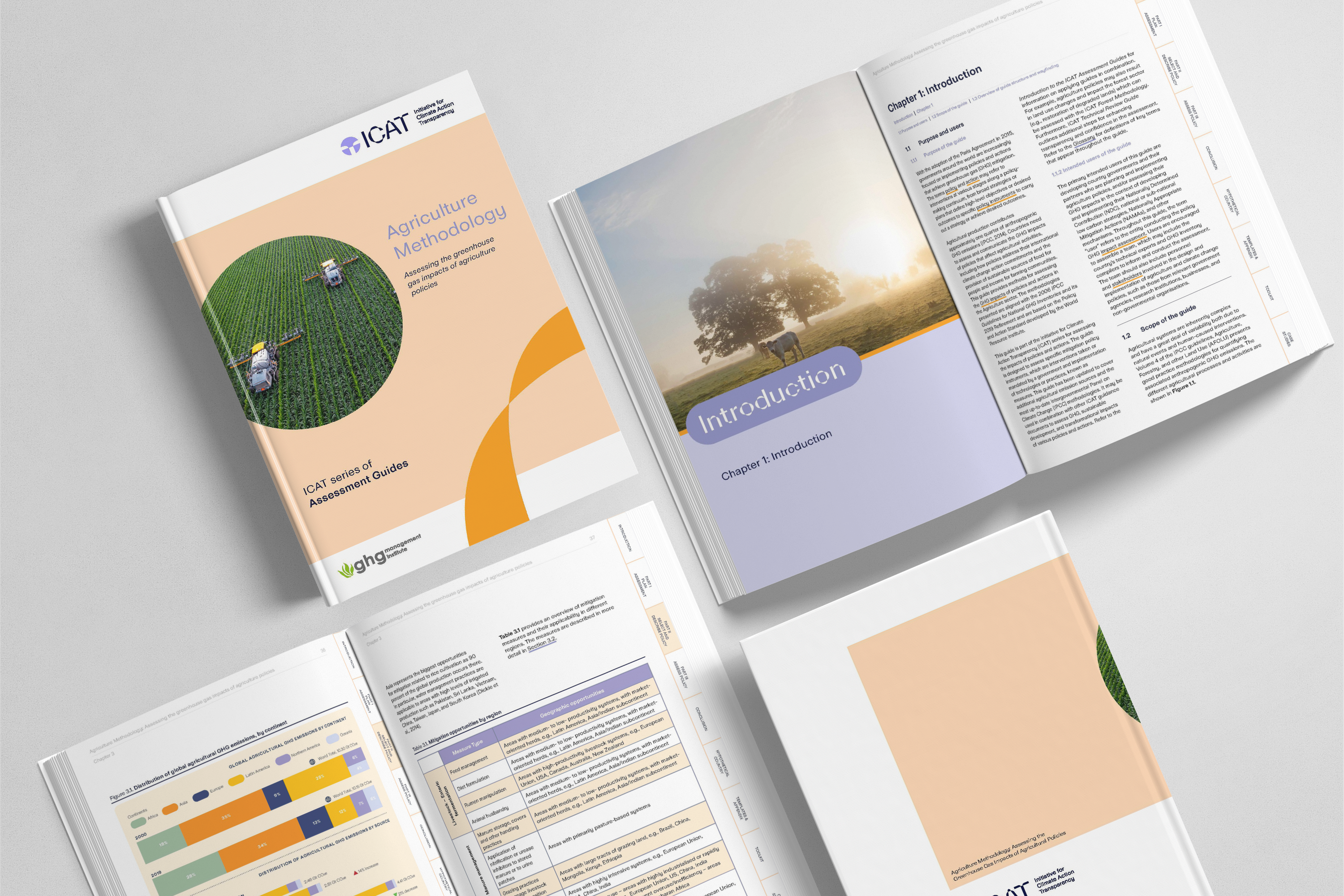ICAT and GHGMI release updated methodology for assessing GHG impacts of agriculture policies

The Initiative for Climate Action Transparency (ICAT) and GHGMI have published a revised Agriculture Methodology to help countries assess the impacts of policies.
Agricultural production contributes approximately one quarter of anthropogenic greenhouse gas (GHG) emissions. With the adoption of the Paris Agreement in 2015, governments around the world are increasingly focused on implementing policies and actions that achieve GHG mitigation. Countries need to assess the GHG impacts of policies that affect agricultural activities to report internationally in line with the Paris Agreement, and evaluate policy effectiveness. Domestically, policy evaluation can inform future policy design to mitigate GHGs and provision sustainable sources of food and livelihoods for farming communities.
To support governments and their partners who are planning and implementing agricultural policies, the ICAT has released an updated Agriculture Methodology. GHGMI led the revision of the methodology which guides the assessment of GHG impacts of agricultural policies and actions in the agriculture sector. In particular, the guidance focuses on the largest agricultural emission sources globally including: livestock and manure management, fertilizer application, soil carbon, and rice cultivation.
The guidance included in the methodology is aligned with the 2006 IPCC Guidelines for National GHG Inventories and its 2019 Refinement and is based on the Policy and Action Standard developed by the World Resource Institute.
The guide, along with supplemental materials, are available from ICAT. We encourage representatives of governments and their partners involved in planning, implementing, and/or assessing GHG emissions for national low-carbon strategies or to meet commitments to the Paris Agreement to use this guide.
Download the guide from the ICAT website
Note: This post has been updated. It initially identified a webinar event to launch the guide’s publication. The webinar recording will be available from ICAT’s website.

Hi, I hope in the future you can have some webinars with a schedule that fits the pacific time. Thanks.
The webinar will be recorded and we’ll post a link to the recording here as well. Apologies that the timing doesn’t align with your time zone, it’s always a challenge with a global audience.
Energy -Water-Food-Healthcare-Environment-Nexus and their potentials reducing GHG emissions!
Interested in participating in the webinar. I believe the topic of Urea use, Land use change and Methane emissions derived from crops are key for better management of GHG emissions
Thanks you for your interest, hope you find the webinar useful. Those are definitely some of the key contributors to agricultural emissions. Guidance on estimating emissions from urea and methane from livestock and rice are included in the guide. Also the guide doesn’t go into land use change, but has a chapter on soil carbon stocks in response to land management.
I would to attend the session.
Thank you for your interest.
Dear GHG Management Institute,
I am currently a researcher learning the policy aspects of GHG accounting as I am trying to move to the industry side of the C market.
Thank you,
Nadia.
Thank you for reaching out. I hope you find the webinar informative and relevant to your work.